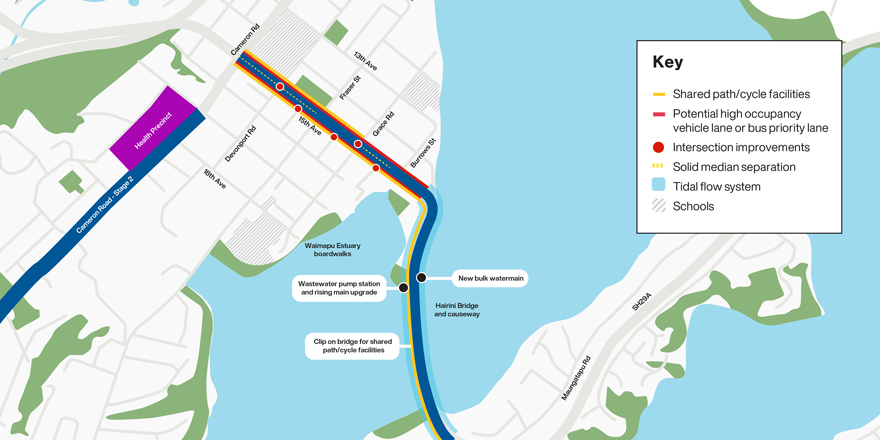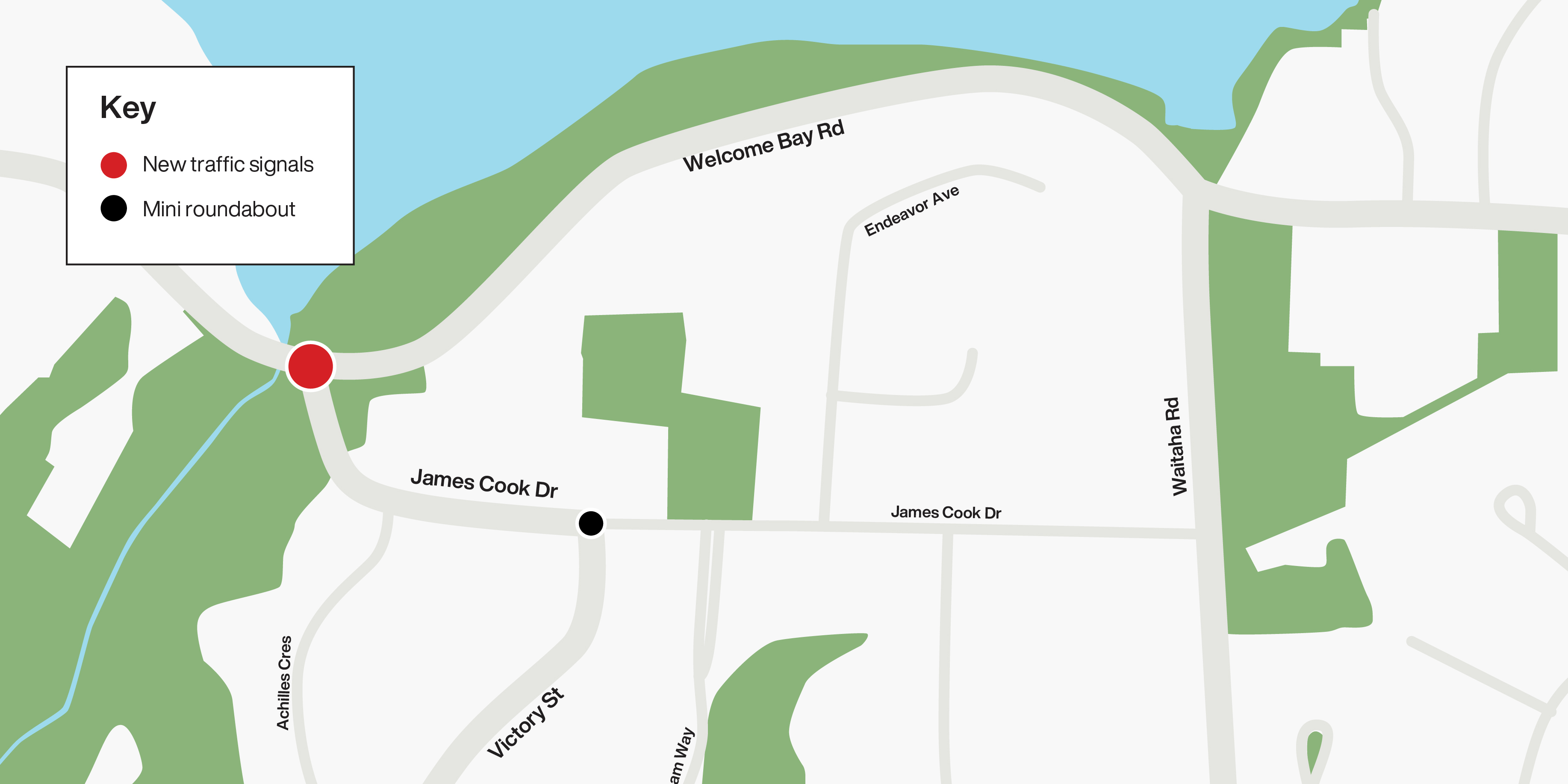Update October 2024
Plans to reduce congestion and improve walking and cycling facilities on Fifteenth Avenue, Turret Road and Welcome Bay Road have been amended in line with the 2024-2034 Government Policy Statement (GPS) on land transport which sets out how funding will be allocated for transport activities.
In August 2024 Council endorsed the business case to be submitted to NZ Transport Agency Waka Kotahi (NZTA). The agency must consider the GPS when making its funding decisions. GPS 2024-2034 is built around four strategic priorities - Economic Growth and Productivity, Increased Maintenance and Resilience, Safety, and Value for Money.
The project will still deliver the Fifteenth Avenue, Turret Road, and Hairini Bridge and causeway upgrades to reduce traffic congestion and improve transport choices as part of the business case for funding to NZTA, with the work to be carried out from mid-2026 to 2029.
Plans for the proposed safety improvements and upgrade of walking and cycling facilities for Welcome Bay Road and some of the roads surrounding Fifteenth Avenue have been amended and funding for this work will be sought outside the immediate project. These works were planned for late 2026 to early 2028 and we still hope to deliver these with a different funding source.
Proposed new traffic signals at the intersection of Welcome Bay Road and James Cook Drive and a mini roundabout at the intersection of James Cook Drive and Victory Street (added to the proposed plans following community feedback) will still go ahead as part of the project.
As part of this project, we will also be doing an upgrade of the water, wastewater, and stormwater infrastructure in the corridor.
The purpose of the project remains the same - to reduce single occupancy vehicle use and make it more attractive to travel by bus, walk, cycle or scooter. Council is committed to achieving all the proposed outcomes of this project in the long-term. While there has been substantial community support for changes that reduce congestion in the area, we know that people also want safer places to cross the road and safe spaces to use different modes of transport such as cycling, walking, skating and scootering.
Community consultation 2023
Thanks to everyone who provided feedback in September-October 2023, either by completing the survey, sending us an email, leaving a comment on social media, or dropping in to talk to us at Welcome Bay about our plans to reduce traffic congestion and improve walking and cycling facilities along Fifteenth Avenue, Turret Road, Hairini Bridge and causeway and Welcome Bay Road.
Along with our technical investigations, your input helped to inform the ideas taken forward in the early design.
You can read the one-page summary of community feedback and/or read the full engagement report below.
Summary of community feedback (47kb pdf) Full engagement report (1.1mb pdf)
What are we proposing?
Based on our technical investigations and community feedback gathered in 2023, we are proposing improvements to Fifteenth Avenue, Turret Road, and Hairini Bridge and causeway, and the signalisation of the Welcome Bay Road/James Cook Drive intersection and a mini roundabout at Victory Street/James Cook Drive. All other walking and cycling and road safety improvements along Welcome Bay Road and some of the roads surrounding Fifteenth Avenue will be funded and delivered separately outside the scope of this project.

Fifteenth Avenue, Turret Road and Hairini Bridge and causeway improvements
Fifteenth Avenue, Turret Road and Hairini Bridge and causeway improvements map (518kb pdf)

Welcome Bay improvements
Welcome Bay improvements map (1.3mb pdf)
Proposed improvements
The proposed improvements include:
- Four-laning of Fifteenth Avenue from Cameron Road to Burrows Street, one lane in each direction for general traffic and one high occupancy lane (T2) for vehicles with two or more passengers (including buses)
- Raised centre median on Fifteenth Avenue from Cameron Road to Fraser Street
- New signalised crossing at intersection of Fifteenth Avenue and Devonport Road
- Other intersection changes along the corridor
- Shared use path on Fifteenth Avenue between Fraser Street and Hairini Bridge (on the south side)
- Shared use path on Fifteenth Avenue between Fraser and Burrows Streets (on the north side)
- New signalised crossing on Turret Road
- Potential new traffic signals for the Silver Birch Holiday Park near Hairini Bridge (allowing both entrance and exit from the park and turnaround of southbound traffic).
- Three-laning of Hairini Bridge and causeway, including a tidal flow system which means there could be two lanes of traffic going into the city in the morning, changing to two lanes going out of the city in the afternoon
- A clip-on shared use path on Hairini Bridge for walking and cycling
- Proposed new traffic signals at the intersection of Welcome Bay Road and James Cook Drive with two approach lanes (one for buses only during the morning peak)
- Mini roundabout at the intersection of James Cook Drive and Victory Street.
Protecting our flora and fauna
The Pōhutukawa trees next to Turret Road are protected as Notable trees under the City Plan. They will not be impacted by changes proposed in any of the options. There may be opportunities to enhance the space around these trees to ensure they are protected and continue to be valued by the community.
The Hairini Bridge is home to a colony of protected white-fronted terns which nest on the historic piers on the western side of the bridge. We are investigating options to ensure a good nesting habitat for the tern population is available before any changes are made to the area.